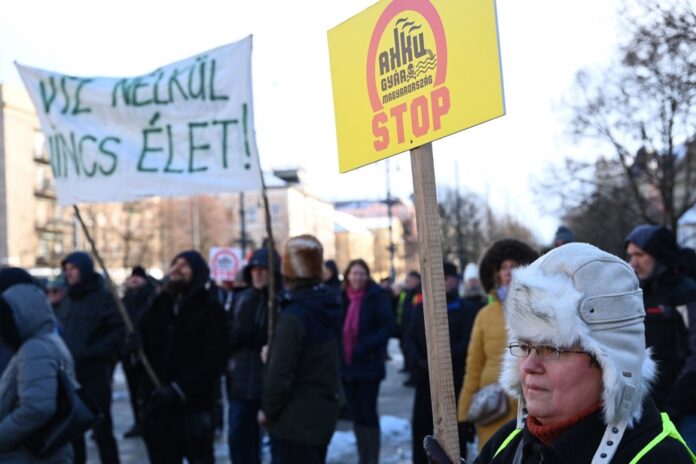Electric vehicle battery factory projects are springing up everywhere. There are some who desperately want to inherit it, others not so much.
This is the case in Hungary, where Mercedes-Benz and CATL, the Chinese battery leader, want to build an almost $8 billion factory. The project, which would be the most important private investment in the history of the country, arouses a monster opposition within the population of the elected region and even throughout the country.
According to the New York Times, which has gone to feel the pulse of the population, the protest is even gaining the allies of President Viktor Orbán, who are beginning to side with the opponents, even if this investment is the result of the government’s promotional efforts. Hungarian.
What is still a dream for Quebec is starting to be too much in Hungary, it seems. Environmentalists lament the pressure these mega-factories put on water and energy demand. The risks of pollution of the immense land monopolized by the installations are also the subject of concern in a country whose environmental laws are not the strictest in Europe.
The Hungarian government is proud to have attracted significant investment in the automotive sector. Over the past six years, investments of 14 billion have been announced across the industry.
The country is already home to manufacturers and battery manufacturers like Samsung. It can boast of having on its soil the complete value chain of batteries for electric cars, from anodes and cathodes to final assembly.
Hungary’s advantage is due to several things, including relatively low wages and taxes, but also, and above all, its proximity to European car manufacturers, mainly German, eager to catch up with China’s huge lead in the electric transportation.
Europe had started to pull out all the stops to make sure they stayed in the race. The Volkswagen manufacturer alone announced last year its intention to build six battery factories in Europe, in Germany, Sweden, Spain and in three other countries which have yet to be determined.
Since then, the game has changed, as they say. First, Germany was deprived of Russian gas, forcing its entire economy to adjust. Higher energy prices and uncertainty about its availability across the European continent have changed many plans, including those of Volkswagen, which has chosen to cross the Atlantic.
Then, the decision of the Biden administration to invest massively in the energy transition in general and electric transport has just clipped the wings of the European automotive sector.
Billions of dollars of public assistance in the form of loans, grants and tax credits are available for the manufacture and purchase of electric vehicles, as long as they are manufactured in the United States and the area of North American free trade using local raw materials.
The combined impact of the price of energy and the American protectionist policy has already started to influence the course of investments, according to the specialized site Atlas Public Policy. At the end of 2022, Europe was still the top destination for transportation electrification projects. In early 2023, the United States joined the lead with projects totaling $210 billion by 2030, nearly half of total announced investment globally.
The United States is betting that the electrification of transportation will bring back manufacturing jobs that have disappeared over the years. For Hungary, that may mean that this windfall will eventually dry up.















